The multitude of options can completely baffle a person while trying to select the correct adhesive for an application. Krazy Glue, Super Glue, and Gorilla Glue are household names among the included choices promising strength and versatility. But how do these glues differ comparably? This blog article takes a close look at the positives and negatives of each of these huge forces in adhesives and what best fits their use. Whether you are trying to mend something broken, doing some arts and crafts, or building some really heavy-duty stuff, try to understand how these products stack up against one another in order to choose the right one for you. And here comes the final glue battle where your match will be determined.
What is the Difference Between Krazy Glue, Super Glue, and Gorilla Glue?
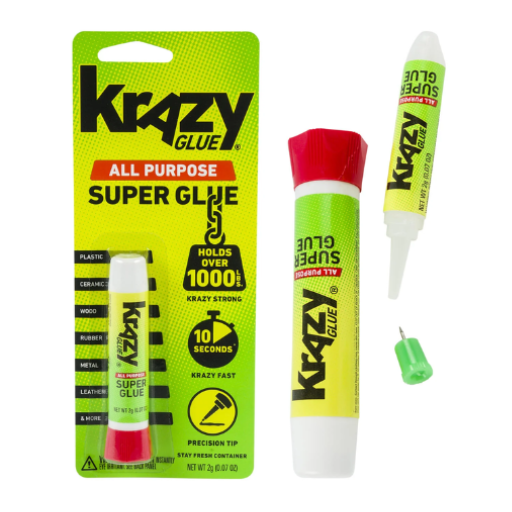
Krazy Glue, Super Glue, and Gorilla Glue only possess differing attributes, making each of them suitable for distinct purposes:
- Krazy Glue is cyanoacrylate adhesive and forms a strong and quick bond on non-porous surfaces. It is best used for small and precise fixes on a ceramic, metal, and plastic.
- Super Glue is another cyanoacrylate glue like Krazy Glue. It may, however, vary slightly in composition from one brand to another. It is the glue that is often employed for bonding items strong and fast and general-purpose repairing.
- Gorilla Glue is a family of polyurethane glues noted for its versatility in bonding both porous and non-porous surfaces, ranging from wood, metal, foam, glass to stone. It expands upon curing to form a very strong and long-lasting bond but usually requires clamping while curing.
Every adhesive has a defined application area and grip strength, so the choice should depend on the substances to be bonded and the right demands of the project.
Understanding the Types of Glue: Krazy Glue vs Super Glue
|
Key Point |
Krazy Glue |
Super Glue |
|---|---|---|
|
Chemical Base |
Cyanoacrylate adhesive |
Cyanoacrylate adhesive |
|
Bonding Time |
Instantly bonds in 10-30 seconds |
Instantly bonds in 10-30 seconds |
|
Best Material Compatibility |
Plastic, ceramic, rubber, metal |
Plastic, ceramic, rubber, metal |
|
Strength |
High tensile strength |
High tensile strength |
|
Resistance to Moisture |
Moderate moisture resistance |
Moderate moisture resistance |
|
Temperature Resistance |
Performs best in room temperatures |
Performs best in room temperatures |
|
Application Precision |
Suitable for small, precise repairs |
Suitable for small, precise repairs |
|
Drying Color |
Transparent |
Transparent |
|
Shelf Life |
Relatively short (6-12 months) |
Relatively short (6-12 months) |
|
Ease of Use |
Simple squeeze application |
Simple squeeze application |
|
Limitations |
Less effective on oily or smooth surfaces |
Less effective on oily or smooth surfaces |
|
Common Uses |
Repairs for household items, crafts |
Repairs for household items, crafts |
Krazy Glue vs Gorilla Glue: Which is Better?
Looking at Krazy Glue versus Gorilla Glue, and the best choice depends on material properties and tasks involved, the scenario changes by selecting one or the other. Primarily making use of cyanoacrylate, Krazy Glue gives one of the strongest bonds for very fast, very precise repairs on non-porous surfaces. It sets very fast, often in seconds, so it is best for immediate fixes on small items like ceramics, plastics, or metal. The bond could, however, degrade under moisture or where surfaces oil up.
Gorilla Adhesive, conversely, due to being polyurethane-based, offers versatility and water resistance, making it excellent for bigger projects where durability and the capacity to adhere disparate materials, like wood, stone, and glass, are all being called for. Because Gorilla Glue expands through curing, it fills voids well; however, this needs a very accurate application to avoid overflow contamination. Another downside is that curing time can be measured in hours instead of minutes.
Being quick, light, and delicate, the primary function of Krazy Glue is small repairs that require a very swift operation, while Gorilla Glue is generally recommended for heavy-duty applications that must last forever, especially when bonding to porous and non-porous surfaces. Knowledge of how these glues adhere paints a clear picture of how to make the right decision depending on the needs of an involved project.
How Do These Glues Work? A Look at Cyanoacrylate Adhesive
Cyanoacrylate adhesives are commonly known as super glues and operate by an anionic polymerization process. Once exposed to moisture-even in trace amounts found in the surrounding air or on the surface of materials through cyanoacrylate molecules-quick reaction begins as the molecules join to form very tight bonds between them. The bonding process reaches its top efficiency within seconds upon the contact and is what makes cyanoacrylates ideal for speeding up repairs.
Which is the Best Super Glue for Your DIY Project?
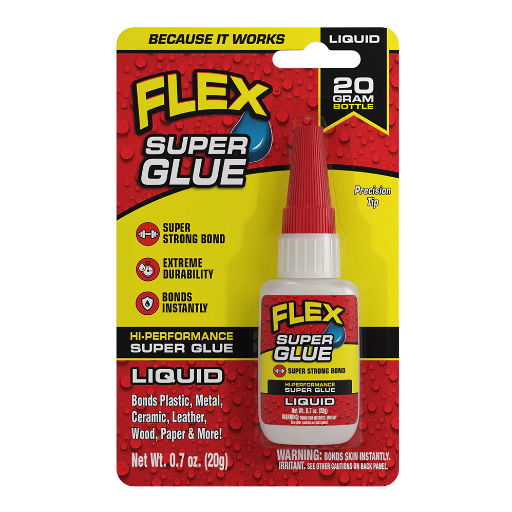
Picking the best glue for your next DIY project depends on the materials you are using and the requirements of the task. Generally, putting to use some super glue of the cyanoacrylate type may be fairly dependable, being that it dries fairly quickly and bonds fairly quickly on coarse materials. For bonding smooth or very vertical surfaces to non-porous materials like metal, glass, and ceramics, gel-based superglue would be a better choice. If gluing wooden or other porous materials, try to find some kind of formula marketed for such substrates so it can ensure a strong glue. Always read the label for project compatibility comments and to check for such needs as water resistance to heat tolerance if the project will be subjected to demanding conditions.
Factors to Consider When Choosing the Right Glue
- Material Compatibility
-
- Wood: PVA wood glue is used for strong joints and for durability. Industry tests contend that the tensile strength of PVA adhesives may go as high as 4,000 PSI – good for woodworking projects.
- Metal and Glass: Epoxy adhesives or gel-based super glues provide a greater bond on non-porous surfaces due to their adhesion properties and their resistance to shear forces.
- Plastic: Many plastics need either special adhesives of the cyanoacrylate type or solvent-based adhesives because the common ones may be rejected due to lower surface energy.
- Environmental Resistance
-
- Water Resistance: Waterproof glues like epoxy resins and polyurethane-based superglue works very well when humidity is high or under water. Such glues usually have the “waterproof” label of at least the ANSI Type 1 or Type 2.
- Cyanoacrylates and such fast glue type bonds almost instantly, perfect for spontaneous fixes.
- Setting Time
-
- Cyanoacrylates and such fast glue type bonds almost instantly, perfect for spontaneous fixes.
- Epoxies take their own hour or two before they fully cure; this allows for the fine adjustment of the glue joint but means you will need to hold the joint together with clamps or fixtures while the glue cures.
- Load-Bearing Capacity
If this is going to be a heavily stressed or load-bearing assembly, adhesives with defined tensile and shear strength parameters must be found. Industrial-grade epoxies will support well above 2,000 PSI, suitable for load-bearing assemblies of mechanical parts.
How to Apply Super Glue for Optimal Results?
Super glue application methods are very important to establishing full-strength and durable bonds. First, ensure the surfaces to be glued are clean and dry and have no grease, dirt, or other contaminants- these really will increase adhesion. Next, for non-porous materials, sanding the surface lightly with fine-grade sandpaper will give a bit of texture and a better grip. Only apply a small dispensing amount of glue, even spread out on one surface- big amounts can run slowly in curing and be weak in bonding. After pressing both surfaces together, keep a firm hold on the bond for between 10 to 30 seconds as specified in the instructions. Any disturbing of the surface should be avoided during the full setting time of the bond, which could be 24 hours to achieve maximum strength. In cases where bonding is required to be very precise, super glue applicators with a fine nozzle or brush tip are best for precise application. Handle with care; it sets very fast and can be tricky to handle if accidental bonding occurs.
Can You Use Krazy Glue on Plastic and Other Materials?
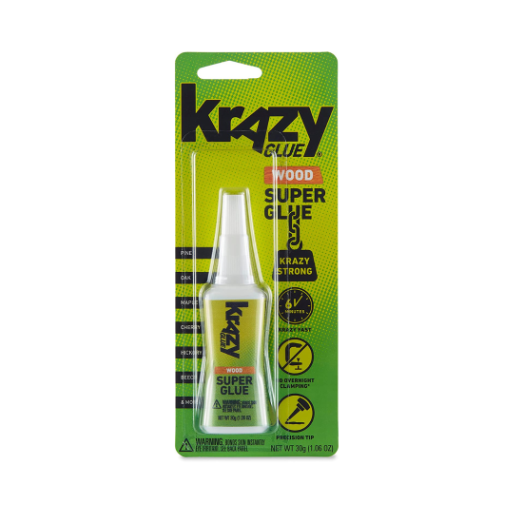
Yes, Krazy Glue can be used on plastic and a variety of other materials, including ceramic, wood, metal, rubber, and leather. However, it is important to note that not all plastics are compatible. For example, smooth or non-porous plastics like polyethylene (PE) and polypropylene (PP) often require a primer to achieve a strong bond. Always check the label or manufacturer’s guidelines to ensure compatibility with your specific material.
Krazy Glue on Plastic: Is it Effective?
On the contrary, depending on the chemical nature of the plastic, the application of Krazy Glue sometimes gives varying results. With an application to materials such as polystyrene and polycarbonate, the glue accounts for good, reliable bonding with the unique property of reactivity of these materials at their surfaces. On the other hand, trying to put a strong adhesion on low-surface-energy plastics such as polyethylene (PE) and polypropylene (PP) is rather difficult. They pretty much resist being bonded to, thanks to their non-porous surfaces and their in-active chemical nature. In order that you might strengthen the glue’s power on such surfaces, you would be wise to use a specialized primer made for them. Lab tests have shown that when surfaces are properly prepared and may be cleaned, roughened, or even primed, cyanoacrylate glues such as Krazy Glue have shown the best performance. So always pay attention to adhering to the manufacturer’s instructions so you can guarantee the best results with bonding.
Using Super Glue on Porous Surfaces: What You Need to Know
How Long Does Glue Take to Cure and Dry?
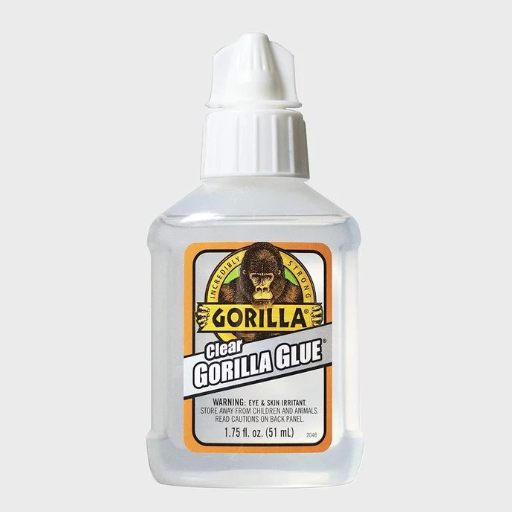
Usually, gluing needs drying and curing, according to glues and the existing conditions. To say it in a manner where most people can comprehend it, try to imagine drying as when something still feels sticky enough to touch, whereas curing would be when an adhesive fully hardens chemically. For the excellent example of cyanoacrylate (super glue) glues, drying usually does occur in seconds or a minute but needs 24 hours to cure fully. Epoxy glues do their trick, given time; within 5 to 30 minutes, they bond, and 24 to 72 hours assure a full cure, depending on the recipe. For PVA glues, (wood glues) drying spans from 30 minutes and 1 hour, with curing after about 24 hours. Notice of specific drying and curing usually comes with a product.
Curing Times: Krazy Glue vs Gorilla Glue vs Super Glue
The three glues are generally penned together: Krazy Glue, Gorilla Glue, and Super Glue. They differ in curing time depending on their formulation and purpose of use. Krazy Glue bonds almost instantly within about 10-30 seconds but achieves a complete cure in 24 hours. Gorilla Glue needs a little bit more time due to its extensive operations being waterproof – about 20-30 minutes for initial curing of the standard formula and 24 hours for full strength. Nevertheless, the curing process will best activate with moisture, so it requires moist surfaces. Super Glue, also a cyanoacrylate, operates similarly to Krazy Glue with rapid bonding in under a minute and complete curing after 24 hours. When comparing these adhesives, the choice largely depends on the material being bonded and the environmental conditions, such as humidity and temperature, which can impact curing times. Always consult the manufacturer’s data sheets to ensure the adhesive meets your precise project requirements.
What Affects the Drying Time of Different Adhesives?
The drying time of any adhesive depends on several factors, which influence also its chemical curing and bonding processes. One is the ambient temperature, or simply temperature outside, since adhesives cure faster in warm environments, heat being a promoter in polymerization. In contrast, low temperature leads to a significant delay in curing. The second major factor behind the speed of drying is humidity; the presence of moisture could either aid or hinder drying, depending largely on the type of adhesive. For instance, cyanoacrylate adhesives need an environment with moderate humidity to activate curing, while solvent-based ones may dry faster in a drier environment.
Consideration on the bonding substrate is another important factor. Porous materials, such as wood or fabric, absorb some glue and dry faster on the surface but slow down curing; non-porous materials, such as metals or glasses, let glues dry slowly. Thickness of adhesive is yet another factor- thinner coats generally cure faster as they get more exposure to air or curing agents, whereas thicker applications may delay the polymerization.
What Are the Best Practices for Using Gorilla Glue?
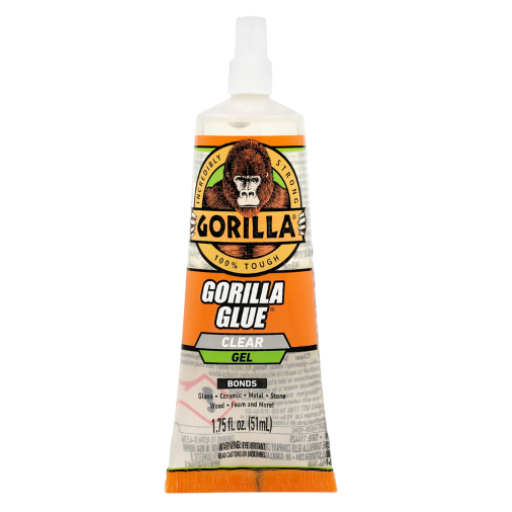
- Prepare the Surfaces: Ensure the materials to be bonded are clean, dry, and free of dust or grease. Proper preparation improves adhesion.
- Apply Sparingly: Gorilla Glue expands as it cures, so only a very little amount should be used. This will prevent excess expansion of the glue on the surfaces.
- Add Moisture: For non-porous surfaces, lightly dampen one side with water before applying the glue since Gorilla Glue needs moisture to activate.
- Clamp for Bonding: Through applying glue, hold the surfaces tightly to keep good clamp pressure for at least one to two hours. Ideal strength results after 24 hours.
- Work in a Ventilated Area: Good air circulation and ventilation are always common advisories when working with glues to otherwise extend exposure to fumes.
- Store Properly: After use, seal the bottle tightly and store it in a cool, dry place to maintain the glue’s usability over time.
Those are a few of the major ways under which you create a lasting bond with Gorilla super glue Gel application while avoiding other most common errors.
How to Use Gorilla Super Glue Gel Effectively?
- Prepare the Surface: Ensure that the surfaces to be bonded are clean, dry, and free from dirt, oil, or grease. Use a lint-free cloth and, if necessary, an appropriate cleaning solution for optimal preparation.
- Use the Precision Tip: Gorilla Super Glue Gel features a no-clog precision tip to allow varied application. Apply a very little amount of glue to one surface. Just a thin layer will do for a strong bond; excess glue may take longer to dry and may even weaken the bond.
- Align Surfaces Carefully: Join the surfaces immediately, with perfect alignment. Adhesive bonds almost instantly so there would be no chance for adjustments after placement. Hold with slight pressure for about 10-30 seconds while securing the first bond.
- Allow for Curing Time: While Gorilla Super Glue Gel sets very quickly, it is important to allow the bond to fully cure. For maximum strength, the bonded materials should be left undisturbed for 12 to 24 hours before they are subjected to any kind of stress.
- Temperature Considerations: Gorilla Super Glue Gel performs optimally at room temperature. Avoid using the glue in environments below 50°F (10°C) or above 100°F (38°C), as extreme temperatures can impact performance.
- Storage Tips: Properly store the glue after use by sealing the cap tightly. Keep the bottle in a vertical position in a cool, dry place to minimize exposure to air and prevent the gel from hardening.
By following these detailed steps, users can maximize the performance and longevity of Gorilla Super Glue Gel, achieving precise and long-lasting results.
How to Clean Up Excess Glue After Application?
Removing excess Gorilla Super Glue Gel requires care and application of the right method to prevent damage to surrounding surfaces. For non-porous surfaces, such as glass or metal, wipe away the excess with a damp cloth before it sets. Acetone, or acetone-based nail polish removers, work wonders in dissolving cyanoacrylates; apply sparingly with a cotton swab, working just within the affected site. In contrast, porous surfaces such as wood or fabric require careful attention so as not to spread the adhesive or cause staining. Sanding or scraping gently with fine-grit sandpaper can help remove dried glue from wood without damaging the finish. Always wear protective gloves when handling acetone or scraping dried glue to maintain safety. Timely cleanup is essential, as once the glue is fully cured, mechanical methods like scraping may be the only viable removal option.
Reference Sources
-
Bob Vila’s Guide: A detailed review of the best super glues, including Gorilla Super Glue Gel and Krazy Glue, highlighting their strength and effectiveness. Source
- Blog Comparison: A blog post comparing Gorilla Glue and Krazy Glue, focusing on their adhesive properties and best use cases. Source
Frequently Asked Questions (FAQs)
Q: What is the difference between Gorilla Glue and Super Glue?
A: The difference between Gorilla Glue and Super Glue lies primarily in their chemical composition. Gorilla Glue is a polyurethane adhesive that expands as it cures, making it ideal for porous surfaces like wood and ceramic. In contrast, Super Glue (often referred to as Crazy Glue) is a cyanoacrylate adhesive that bonds quickly and works best on non-porous surfaces like metal or plastic.
Q: Can I use Gorilla Glue on ceramic?
A: Yes, Gorilla Glue is suitable for ceramic surfaces. It provides a strong bond and is particularly effective for repairing ceramic items due to its expanding properties that fill gaps. However, ensure the surfaces are clean and slightly damp for optimal adhesion.
Q: What types of projects are best suited for Super Glue?
A: Super Glue, or cyanoacrylate adhesive, is best for quick repairs on small items or projects requiring a strong bond on non-porous materials like plastic, metal, or glass. It is not ideal for larger projects or those requiring flexibility.
Q: Is Loctite glue better than Gorilla Glue?
A: Whether Loctite glue is better than Gorilla Glue depends on your specific project requirements. Loctite offers various formulations, including options for plastics, while Gorilla Glue excels in porous materials. For metal surfaces, Loctite may provide a stronger bond depending on the specific product.
Q: How long does Super Glue take to cure?
A: Super Glue generally cures quickly, usually within seconds to a few minutes. However, full strength may take up to 24 hours, depending on factors like humidity and temperature. For best results, avoid stressing the bond during this time.
Q: Can Gorilla Glue be used for outdoor use?
A: Yes, Gorilla Glue is suitable for outdoor use thanks to its waterproof properties. However, proper application is crucial; ensure that the surfaces are clean and follow the instructions for the best results.
Q: What is the working time for Gorilla Glue?
A: Gorilla Glue has a working time of about 10-20 minutes before it starts to set. However, it can take several hours to fully cure, especially when used in thicker applications.
Q: Is two-part epoxy stronger than Super Glue?
A: Two-part epoxy is generally stronger than Super Glue, especially for heavy-duty applications. Epoxy is more versatile, as it can bond a variety of materials, including wood, metal, and ceramic, and it is resistant to heat and solvents.
Q: Can I use Super Glue on a plastic surface?
A: Yes, Super Glue works well on certain plastic surfaces, but it’s essential to choose a Super Glue specifically designed for plastics, such as Loctite Super Glue Plastics Bonding System, to ensure a strong bond.
Q: What type of glue should I use for repairing wood together?
A: For repairing wood together, PVA glue (polyvinyl acetate) is often recommended for its strong bond and ease of use. However, Gorilla Glue also works well for wood projects due to its expanding properties and strong bond when cured.



















